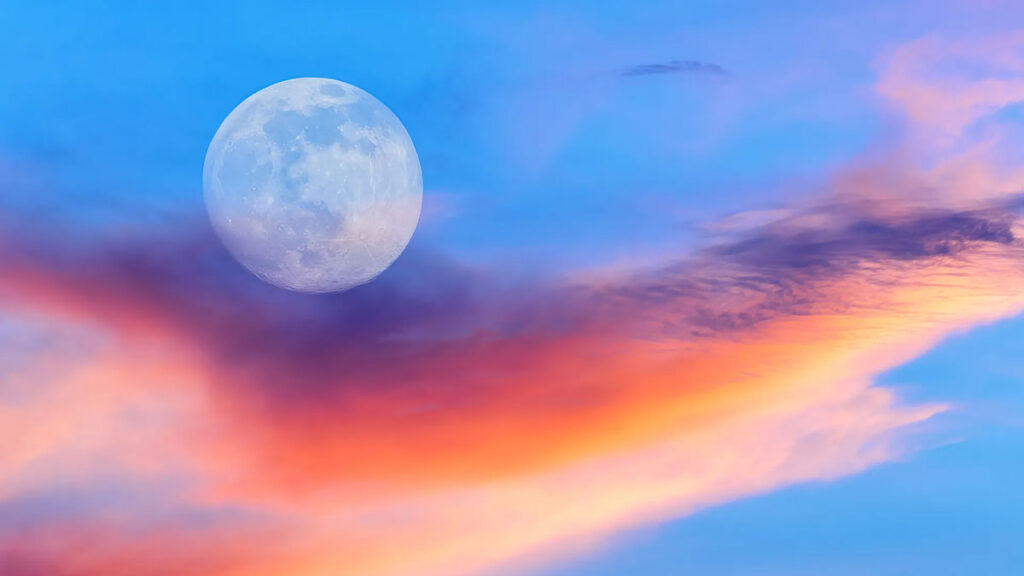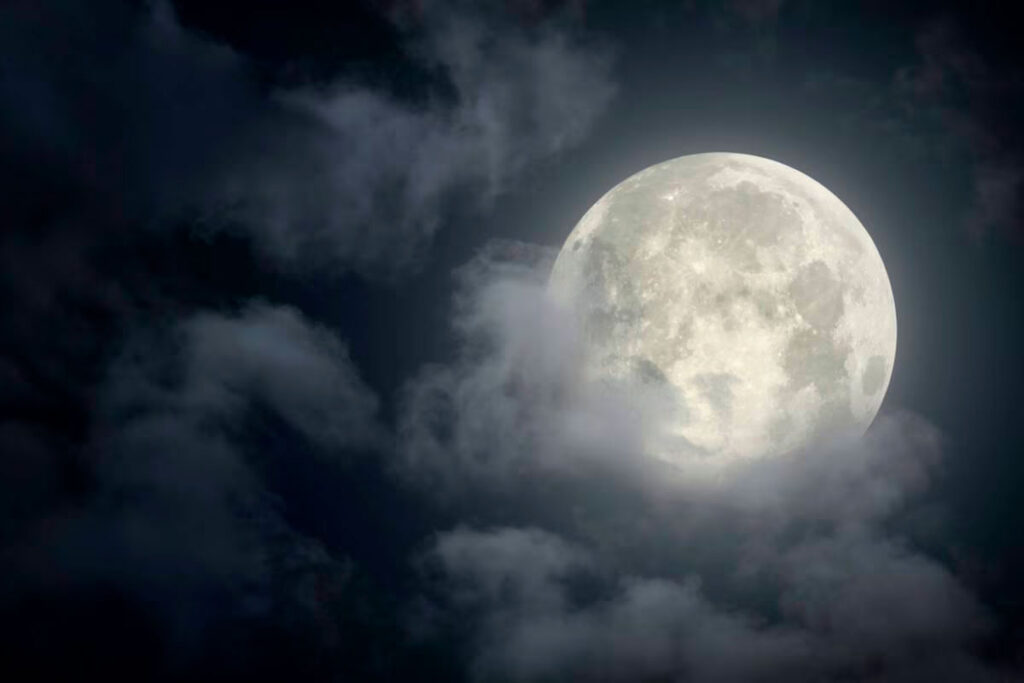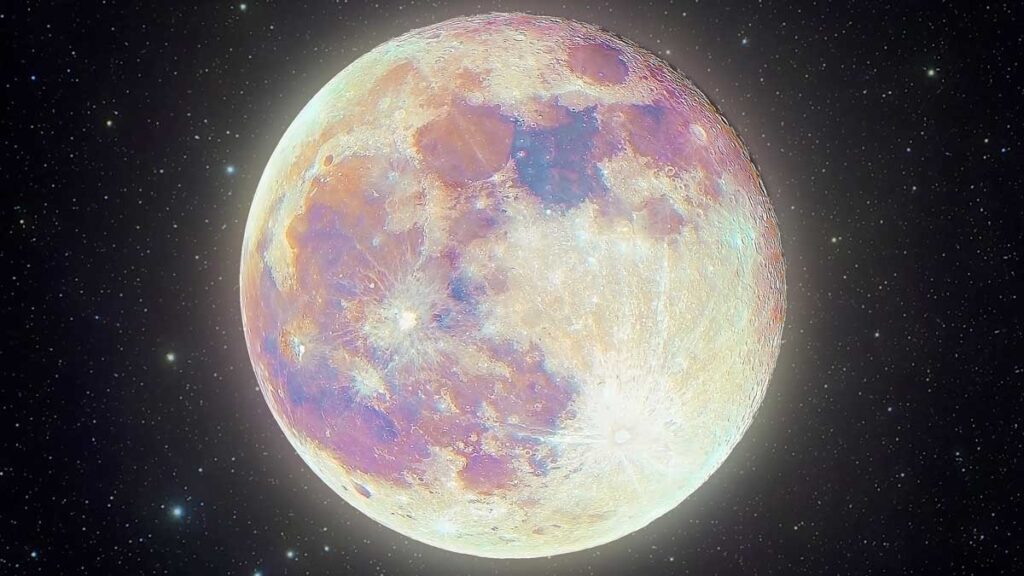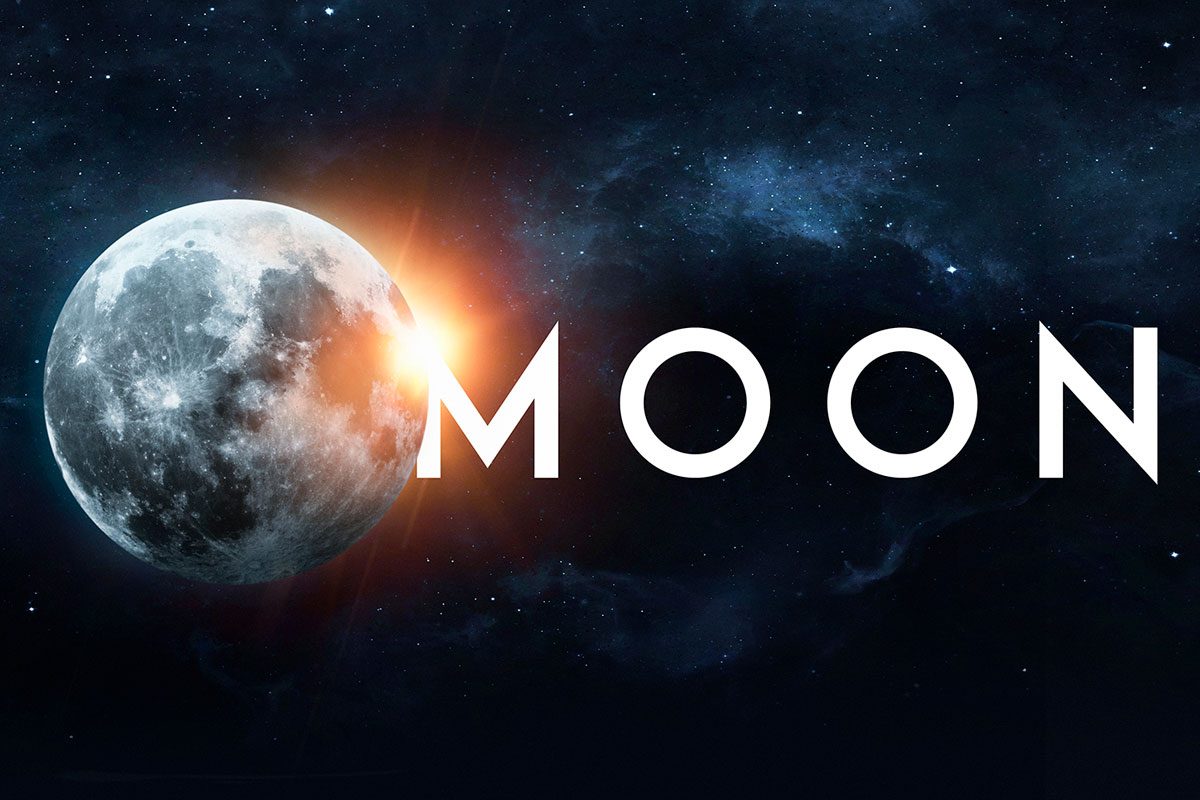The moon, that companion that graces our night sky has fascinated the mind for centuries. Its soft light has sparked both curiosity and wonder, inspiring myths, legends and scientific exploration. Among its phases the full moon stands out as a symbol of beauty and mystery capturing our attention and stirring our emotions. In this article we embark on a journey to uncover the allure of the moon. We will delve into instances of the moon uncover the differences, between it and the new moon and anticipate the upcoming lunar spectacle that never fails to ignite our sense of awe. As we gaze upwards towards the sky we are reminded of the timeless connection, between humanity and the universe itself—a bond forged beneath the glow of a moon.
Table of Contents

Full Moon: Illuminating the Night
In the canvas of the night sky, the full moon paints a mesmerizing picture that captures the hearts of sky watchers and dreamers alike. As the sun, Earth, and moon aligned in perfect harmony, the full moon unveiled its luminous face, casting a soft yet enchanting light that transformed the darkness into a magical realm.
The appearance of the full moon on this date was nothing short of breathtaking. Its round, luminous form shone brilliantly, creating a stark contrast against the midnight blue backdrop of the sky. Craters and plains on the moon’s surface, usually hidden in shadows, were revealed in intricate detail, reminding us of the moon’s own rugged history and the stories it carries.
Beyond its physical beauty, the significance of this full moon resonates across cultures and time. Traditionally, full moons have been tied to various aspects of human life. They mark milestones in agricultural calendars, guiding planting and harvesting seasons. In folklore, full moons are associated with myths and legends, often serving as inspiration for tales of transformation and mystery. Spiritual practices and rituals also find resonance in the full moon’s luminance, representing a time of heightened energy and spiritual connection.
This recent full moon, with its captivating appearance and multifaceted significance, invited us to pause and reflect on our relationship with the cosmos. Its glow reminded us of the vastness of the universe and the interconnectedness of all things. As we gazed at its brilliance, we couldn’t help but feel a sense of wonder, unity, and a touch of the mysterious—a reminder that the cosmos has always been an integral part of the human experience.
What is Buck Moon and what happens during a Buck Moon?
The term “Buck Moon” refers to the full moon that typically occurs in the month of July. Each full moon throughout the year is associated with various names, often rooted in Native American, colonial American, or other cultural traditions. These names were historically used to track the changing seasons, lunar cycles, and natural phenomena. The Buck Moon, in particular, derives its name from the habits and behaviors of certain animals during this time of the year.
Here’s what typically happens during a Buck Moon:
- Buck Deer Antlers: The name “Buck Moon” is closely linked to the growth and development of buck deer antlers. During the early summer months, which coincide with July in many regions, male deer, known as bucks, begin growing new antlers. These antlers start as small, velvety protrusions covered in a soft tissue called velvet. As the summer progresses, the antlers grow larger and more robust. By the time of the full moon in July, the antlers of many bucks have fully matured, and they have often shed the velvet covering. This is the time when buck deer typically showcase their fully formed antlers, making them more visible in the wild.
- Breeding Season: In many regions, the Buck Moon aligns with the breeding season of deer. Male deer use their antlers not only for defense but also to compete with other bucks for the attention of female deer, known as does. The fully grown antlers play a crucial role in establishing dominance and securing mating opportunities. Consequently, July is a significant period in the reproductive cycle of deer, and the Buck Moon is a symbol of this pivotal time in their lives.
- Natural Cycles: The Buck Moon is just one example of how traditional moon names are often tied to natural cycles and seasonal changes. These names were used by various cultures to mark the passage of time, guide agricultural activities, and understand the behavior of wildlife. While modern society may not rely on these lunar names as extensively as in the past, they serve as a cultural and historical connection to our natural world.
It’s important to note that while the Buck Moon’s name is associated with these natural events, the moon itself doesn’t cause these behaviors in animals. Instead, the moon’s phases serve as markers for these seasonal changes that occur in the natural world.

full moon for july
The full moon for July, often referred to as the “Buck Moon,” is a captivating celestial event that graces the night sky during this summer month. Here’s a description of the full moon in July:
1. Date and Appearance:
The full moon in July typically occurs in the middle of the month, although the specific date can vary from year to year. When it does appear, the Buck Moon shines with a radiant and silvery light. Its appearance is characterized by a round, fully illuminated disk that stands out against the backdrop of the night sky. The moon’s surface features, including craters and lunar plains, become more pronounced during this phase.
2. Luminosity:
The Buck Moon illuminates the landscape with a gentle, calming glow. Its soft and silvery light bathes the surroundings in an almost mystical ambiance. The moonlight casts long shadows and creates a serene atmosphere, making it a popular time for night walks, stargazing, and moonlit activities.
3. Cultural Significance:
The name “Buck Moon” is rooted in cultural and natural significance. It is associated with the time of year when male deer, known as bucks, begin to grow their antlers. By July, the antlers are often fully developed and have shed their velvet covering. This lunar name reflects the close connection between nature’s cycles and the behavior of wildlife, particularly the deer population.
4. Midsummer’s Night:
The full Buck Moon occurs during the heart of summer in the Northern Hemisphere, marking the midpoint of the season. Its presence in the night sky adds to the enchantment of warm summer nights, encouraging people to spend more time outdoors and appreciate the natural beauty that surrounds them.
5. Folklore and Traditions:
Throughout history, the Buck Moon has inspired folklore and traditions. Different cultures have ascribed various meanings and stories to this full moon. It has been associated with themes of transformation, renewal, and the interconnectedness of the natural world.
In summary, the full moon for July, known as the Buck Moon, is a radiant and captivating celestial event. Its silvery luminosity, cultural significance, and occurrence during the heart of summer make it a beloved and enchanting sight in the night sky.
full moon for august
The full moon for August, often referred to as the “Sturgeon Moon,” is a celestial spectacle that graces the night sky during this late summer month. Here’s a description of the full moon in August:
1. Date and Appearance:
The full moon in August typically occurs in the middle of the month, although the specific date can vary from year to year. When it rises, the Sturgeon Moon appears as a luminous, round disk in the night sky. Its brilliance is a result of the sun’s direct illumination of the moon’s entire surface, creating a stark contrast against the darkness of the surrounding night.
2. Luminosity:
The Sturgeon Moon bathes the landscape in a soft and enchanting light. Its radiance is less intense than that of a summer sun but is sufficient to cast shadows and create an ethereal glow. This gentle illumination adds to the allure of late summer nights, making them perfect for moonlit strolls and outdoor gatherings.
3. Cultural Significance:
The name “Sturgeon Moon” is rooted in cultural traditions and the behavior of fish. Historically, Native American tribes and early settlers used lunar names to track the changing seasons and the activities of nature. In August, sturgeon fish in North America were often more readily caught, making this lunar name a reflection of the close connection between the moon’s phases and the rhythms of the natural world.
4. Late Summer Magic:
The full Sturgeon Moon occurs during the latter part of summer in the Northern Hemisphere. Its presence in the night sky signifies the waning days of the season and the transition toward autumn. Late summer is a time when the natural world is in full bloom, and the Sturgeon Moon enhances the beauty of the outdoor world, offering a serene backdrop for enjoying the warm evenings.
5. Folklore and Traditions:
Throughout history, the Sturgeon Moon has inspired folklore and traditions. It is often associated with themes of abundance, harvest, and the ripening of fruits and crops. Various cultures have incorporated this full moon into their rituals and celebrations, marking it as a special time for reflection and gratitude.
In summary, the full moon for August, known as the Sturgeon Moon, is a captivating and tranquil celestial event. Its soft luminosity, cultural significance, and occurrence during the late summer season make it a cherished and enchanting presence in the night sky, reminding us of the beauty and cyclical nature of our world.

Are full moon and new moon the same
No, the full moon and the new moon are not the same. They are two distinct phases of the moon in its monthly lunar cycle, and they represent opposite extremes in terms of lunar visibility and illumination.
Here are the key differences between the full moon and the new moon:
1. Visibility:
- Full Moon: During a full moon, the entire illuminated side of the moon faces Earth, making it appear as a complete, round disk in the night sky. This phase is characterized by maximum lunar visibility.
- New Moon: In contrast, during a new moon, the illuminated side of the moon is facing away from Earth, which means the moon appears as a dark silhouette in the sky. It is essentially invisible from Earth during this phase.
2. Position in the Sky:
- Full Moon: A full moon rises in the east as the sun sets in the west, and it sets in the west as the sun rises in the east. This means the full moon is opposite the sun in the sky, resulting in maximum illumination.
- New Moon: A new moon rises and sets approximately with the sun, making it difficult to see in the sky. It is often referred to as being “in conjunction” with the sun.
3. Lunar Cycle:
- Full Moon: The full moon occurs about halfway through the lunar cycle, when the moon has completed half of its orbit around Earth. It is the phase when the moon is farthest from the sun in the sky.
- New Moon: The new moon marks the beginning of a new lunar cycle. It occurs when the moon is positioned between Earth and the sun.
4. Gravitational Effects:
- Full Moon: Full moons are associated with higher tides on Earth because the gravitational pull of the moon and the sun align, creating a stronger gravitational force.
- New Moon: New moons also lead to higher tides due to the alignment of the gravitational forces, but these are referred to as “spring tides.”
In summary, the full moon and the new moon are opposite phases of the moon, representing maximum lunar visibility and minimal lunar visibility, respectively. They occur at different points in the lunar cycle and have distinct positions in the sky in relation to the Earth and the sun.
full moon calendar
A full moon calendar provides the dates and times of all the full moons for a specific year. Since the exact timing of full moons can vary slightly each year, a full moon calendar is a handy tool for sky watchers, astronomers, and anyone interested in lunar events. However, please note that the times listed in such calendars are often given in Coordinated Universal Time (UTC) or Greenwich Mean Time (GMT), so you may need to adjust for your local time zone.
Here is an example of a full moon calendar for a fictional year, with dates and times in UTC:
Full Moon Calendar 2023
| Full Moon Calendar 2023 | ||
|---|---|---|
| Full Moon Date | Native American Name | Time of Full Moon |
| January 6 | Wolf Moon | 6:08 PM |
| February 5 | Snow Moon | 1:29 PM |
| March 7 | Worm Moon< | 7:40 AM |
| April 6 | Pink Moon | 12:34 AM |
| May 5 | Flower Moon | 1:34 PM |
| June 3 | Strawberry Moon | 11:42 PM |
| July 3 | Buck Moon | 7:39 AM |
| August 1 | Sturgeon Moon | 2:32 PM |
| August 30 | Blue Moon | 9:36 PM |
| September 29 | HARVEST MOON | 5:58 AM |
| October 28 | Hunter’s Moon | 4:24 PM |
| November 27 | Beaver Moon | 4:16 AM |
| December 26 | Cold Moon | 7:33 PM |
Please keep in mind that this is just an example, and the actual full moon dates and times for a specific year can be obtained from various sources, including astronomical websites, calendars, and apps that provide lunar phase information. Additionally, you can find full moon calendars for specific years online or by consulting astronomy resources.
Full Moon Calendar 2024
| Full Moon Calendar 2024 | ||
|---|---|---|
| Full Moon Date | Native American Name | Time of Full Moon |
| January 25 | Wolf Moon | 12:54 PM |
| February 24 | Snow Moon | 7:30 AM |
| March 25 | Worm Moon | 3:00 AM |
| April 23 | Pink Moon | 7:49 PM |
| May 23 | Flower Moon | 9:53 AM |
| June 21 | Strawberry Moon | 9:08 PM |
| July 21 | Buck Moon | 6:17 AM |
| August 19 | Sturgeon Moon | 2:26 PM |
| September 17 | Harvest Moon | 10:34 PM |
| October 17 | Hunter’s Moon | 7:26 AM |
| November 15 | Beaver Moon | 4:28 PM |
| December 15 | Cold Moon | 4:02 AM |
Here are some trusted sources for information about the full moon and lunar events:
- NASA (National Aeronautics and Space Administration): NASA’s website is a goldmine of accurate and up-to-date information about lunar phases, moon missions, and lunar science. They provide detailed data on lunar cycles and phases.
- Space.com: Space.com is a reputable online space news outlet. They frequently cover lunar events, including full moon occurrences and interesting facts about the moon.
- The Old Farmer’s Almanac: Known for its long-standing tradition of providing accurate weather and astronomical information, The Old Farmer’s Almanac offers lunar calendars that include full moon dates and times.
- Royal Observatory Greenwich: The Royal Observatory in Greenwich, UK, provides astronomical data and educational resources. Their website often features lunar information and calendars.
- TimeandDate.com: This website offers a variety of tools for tracking lunar phases and provides lunar calendars with full moon dates and times.
- Astronomy Magazine: A well-respected publication in the field of astronomy, Astronomy Magazine’s website is a valuable resource for lunar information and articles about celestial events.







